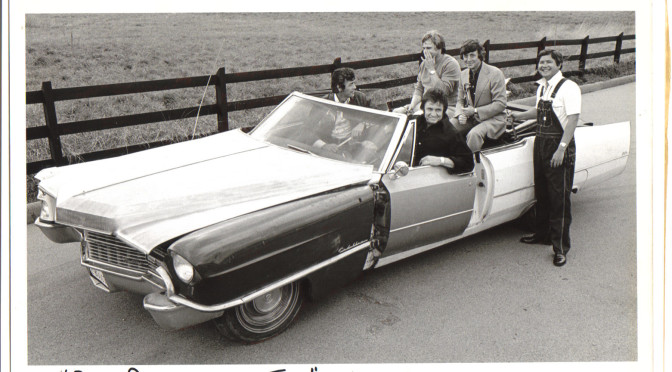In 1976, Johnny Cash released a song called “One Piece at a time“. The song chronicles a GM assembly line worker who builds a Cadillac by taking one piece of a car home each day. Then one day, with enough accumulated parts, the car is put together. When asked what model the car is the reply in the song is:
“Well, It’s a ’49, ’50, ’51, ’52, ’53, ’54, ’55, ’56
’57, ’58’ 59′ automobile
It’s a ’60, ’61, ’62, ’63, ’64, ’65, ’66, ’67
’68, ’69, ’70 automobile.”
You may be wondering what does this have do to with IT and small business?
Well, a lot. Small businesses typically builds out their IT systems the same way as the assembly line worker in Johnny Cash’s song, one piece at a time.
A growing small business is on a treadmill of changing technical needs. The owner has to buy what’s needed when its absolutely necessary and usually can’t afford a gold-plated build out up front. This, after several years of growth and internal system iterations, results in an IT system that resembles the car in “One piece at a time”.
The small business ends up with a whole collection of equipment, software, web service subscriptions, printers, phones, cables that are not labeled, hard drives, switches, WiFi routers and all kinds of other techno-detritus. Some of which may be business critical and some of which no-one can remember why they bought it in the first place.
As the mass of the IT systems grows the resistance to change increases. Things are harder to find, troubleshoot and replace. And, mistakes are more likely.
So what do you do?
Inventory what you have
I can hear the collective groan. Yeah, if you have no idea what you have, you really don’t have much hope for what needs to be done. Get a list of what you have and what it’s function is. It is as simple as creating a spreadsheet or just folder (in a safe location) that details what you have and what it’s for.
Get rid of what you don’t need
Schedule a Friday afternoon with pizza and sodas and get the team to get rid of what you don’t need or no longer use. Recycle, turn it in to Staples or other outlets for responsible disposal of electronic scrap. If you haven’t used it in a year, chances are you won’t. You will reap the benefits of addition free space, better knowledge of what you do have, and the power of tidying up.
Label what you keep
Having cables, switches, servers and any other hardware you use labeled correctly is a big improvement. It will save you a lot of time (which is money). It helps with on-boarding, and when third parties come in for maintenance. Makes it quicker to locate items and helps with replacement planning or dealing with an outage.
Identify priorities for future replacement
Everything has a life. Old servers or user computers may need to be replaced. Network switches lose fans and develop port faults. Everything electronic will fail at some time. So decide what is the most important items of what you have left. Make a list and decide the plan for replacement. Put it on the calendar. Add it to the budget. Do a little at a time, be consistent.
Check and update your warranties
Warranties can be a big help in planning replacement. Some companies like Dell offer onsite replacement. It may be advantageous for your company to extend warranties on eligible equipment. If you can tolerate the replacement window the warranty offers, this can extend the life of your installed equipment.
These are just a few simple steps that help a small business deal with the fragmented environment that can emerge with years of growth. With small but consistent steps, a small business can improve their IT situation without massive, disruptive efforts.
